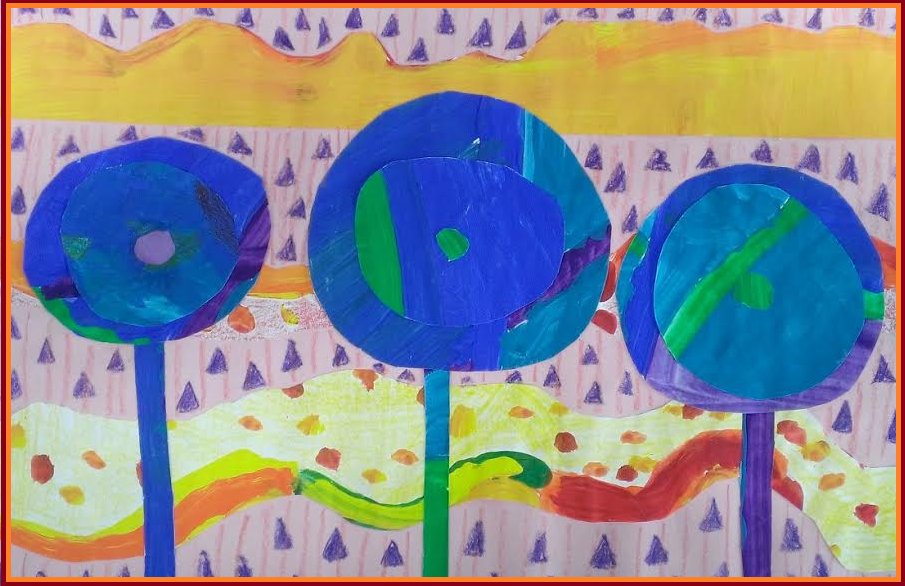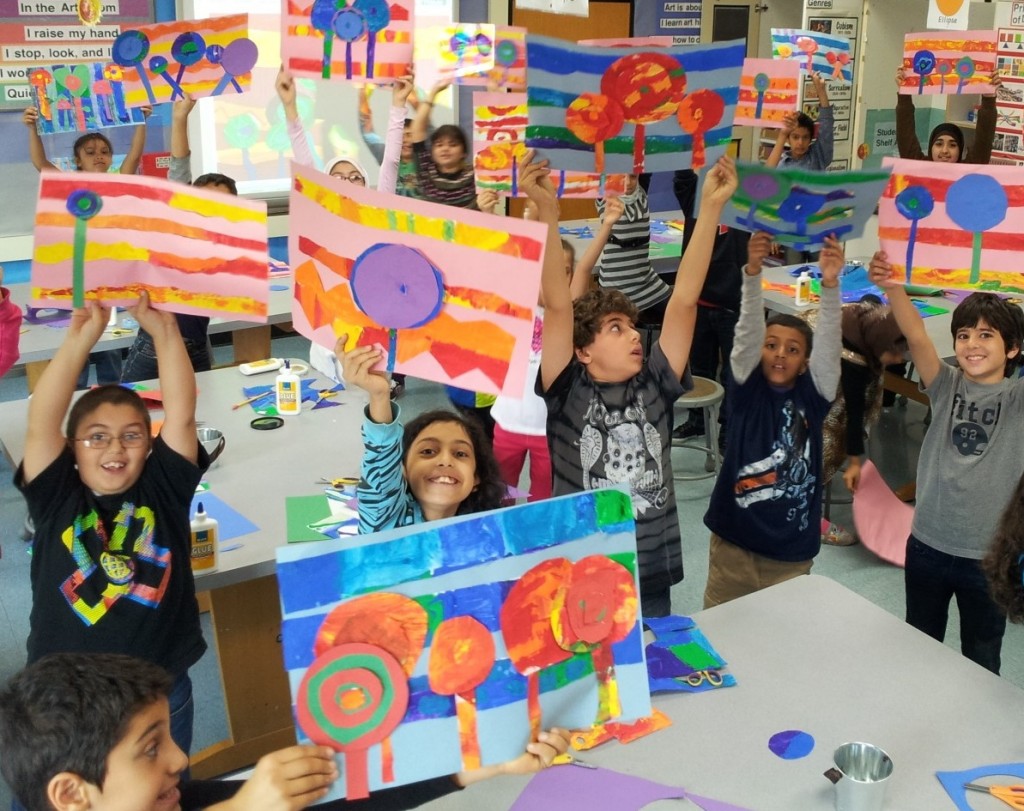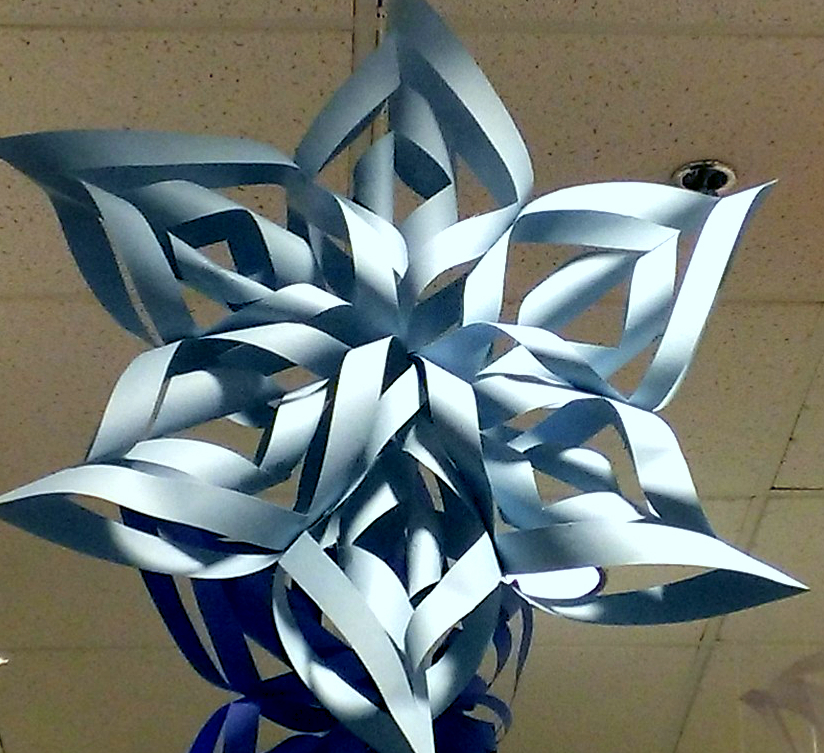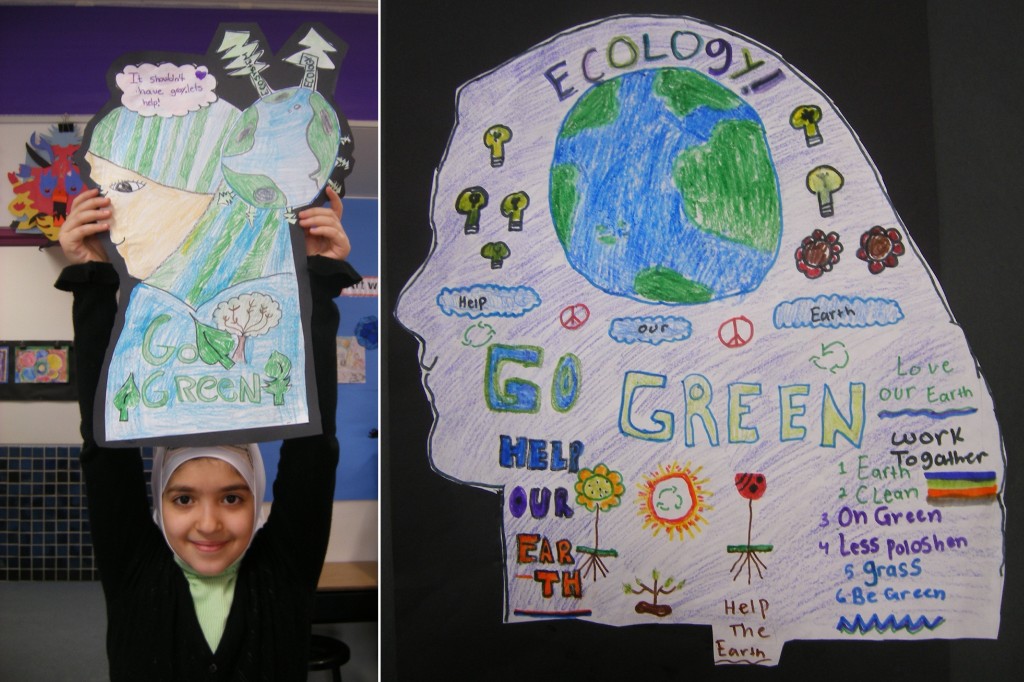Art assignments are more than mere projects, they are holistic learning opportunities in which art creation is just one aspect of the overall learning experience. These experiences can include one-on-one discussion, class discussion, reading, writing, art creation, experimentation, movement, singing, and reflection. The product of these experiences—the “art”—demonstrates a student’s understanding of concepts, vocabulary, and craftsmanship. Below are a few examples of past projects.
Decorative Snowflakes (Craft)
Fourth graders created these decorative snowflakes to commemorate the beginning of winter. Through this process, the students learned a simple difference between arts and crafts: Art is a creative process with emotional input and decision making, where the outcome is not predetermined. The crafting process often has predetermined outcomes and can be replicated, such as these beautiful snowflakes.
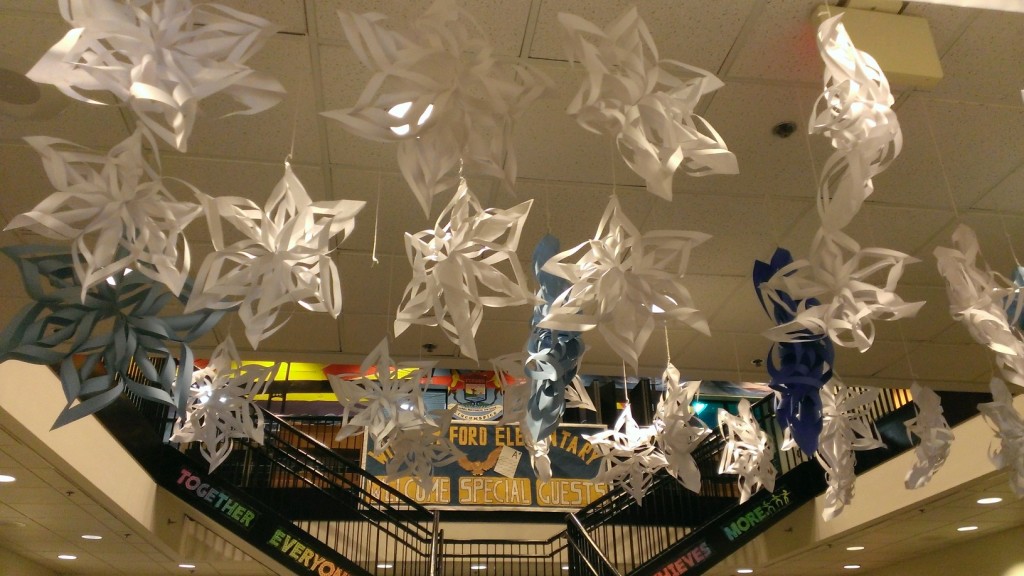
Artful Insects
First and fourth graders created their own versions of these fascinating creatures. After learning about the different parts of an insect, students ensured their own creations had an abdomen, thorax, head, antenna, and six (or more) legs.
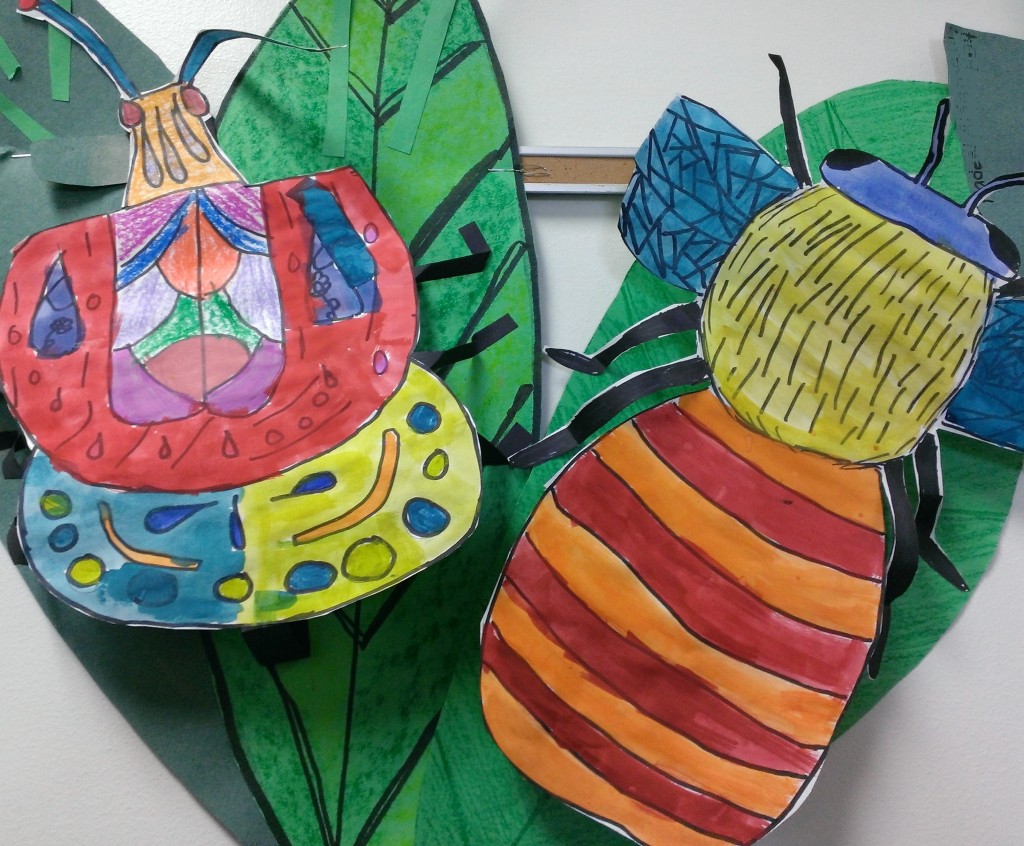
Papel Picados
Students created their own versions of the these festive, decorative paper designs. Traditionally this Mexican folk art is created by using a template and chisels. Our students folded tissue paper and cut out their own patterns with scissors. These colorful creations are often displayed during celebrations with flora, fauna and skeletons as common themes.
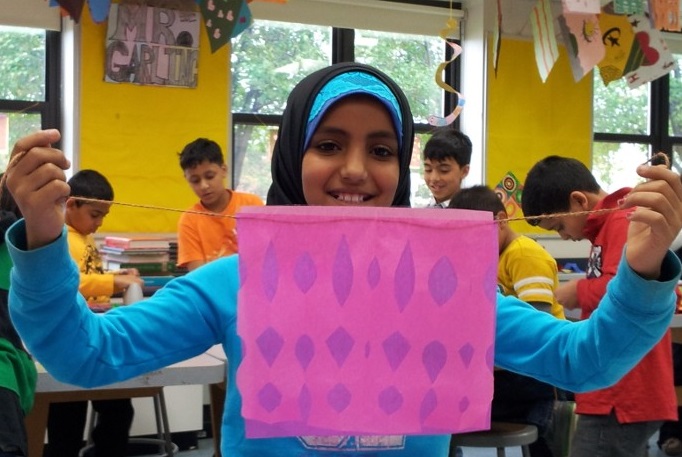
Personal Flags
Flags can be powerful symbols. Students thought about things they like and what is important to them, wrote down a short list, translated those ideas into symbols, and used those symbols to create personal flags all about them.
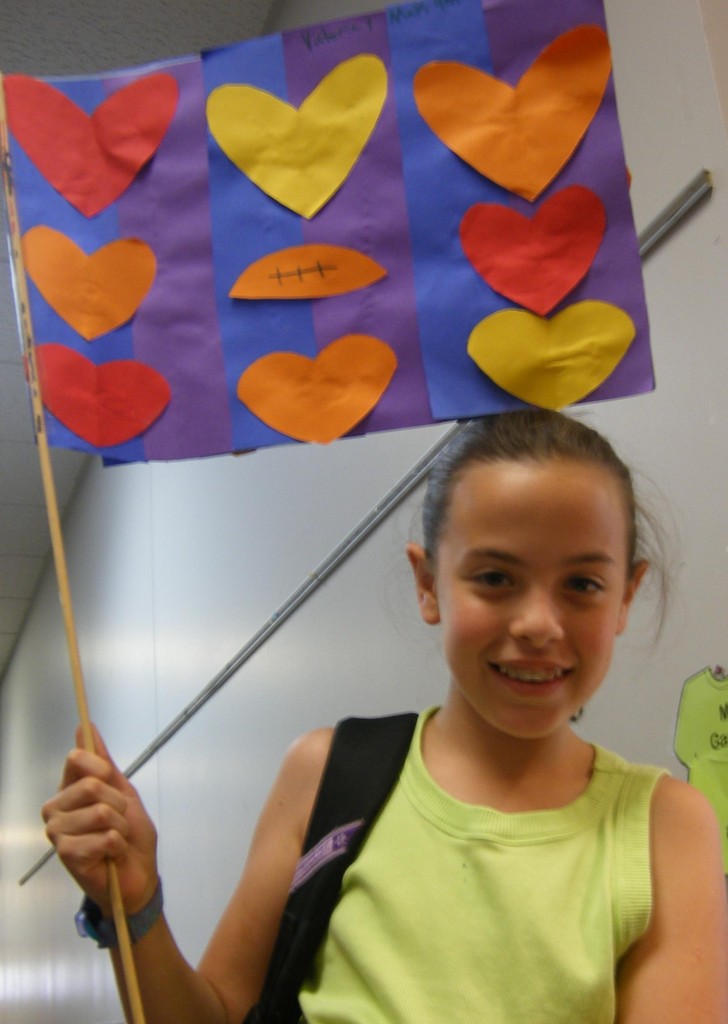
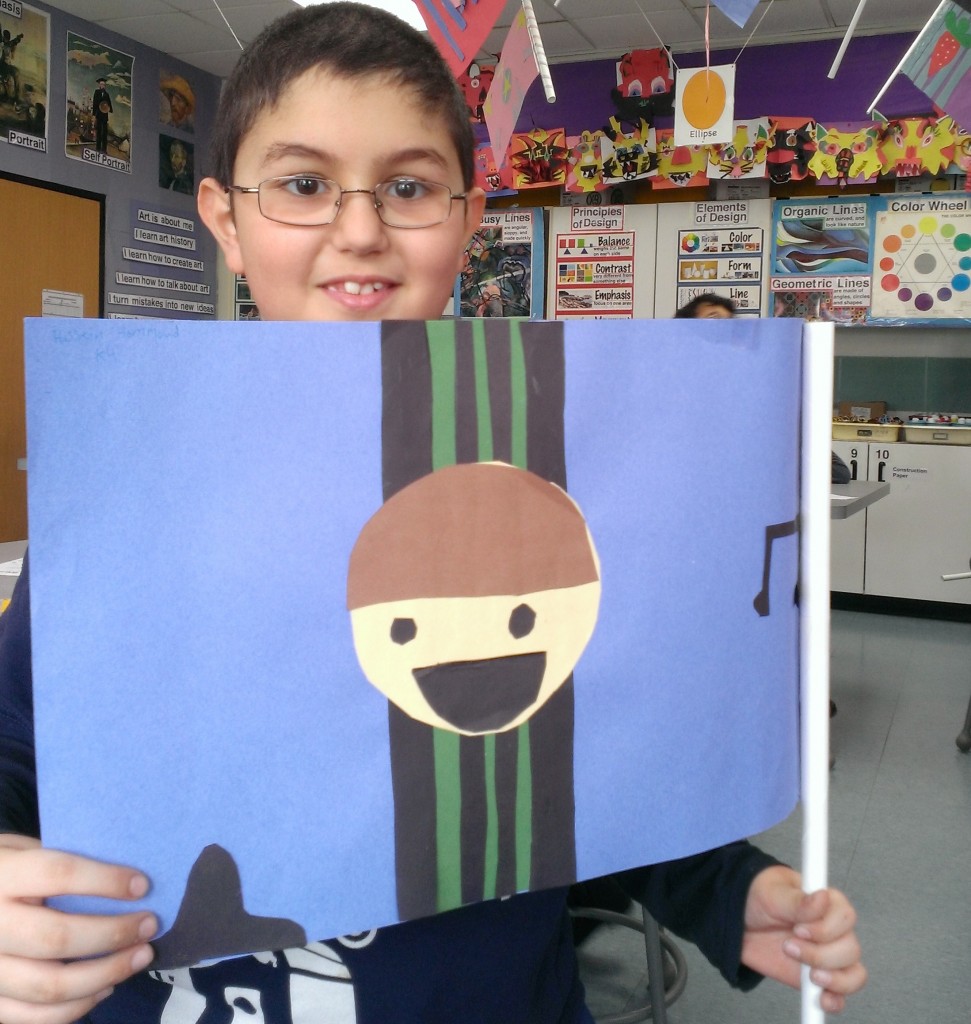
Colorful Chords
Students created strong, dynamic images of unity and movement through shape and repetition. Words were inserted into the compositions as reminders of enjoyable memories.
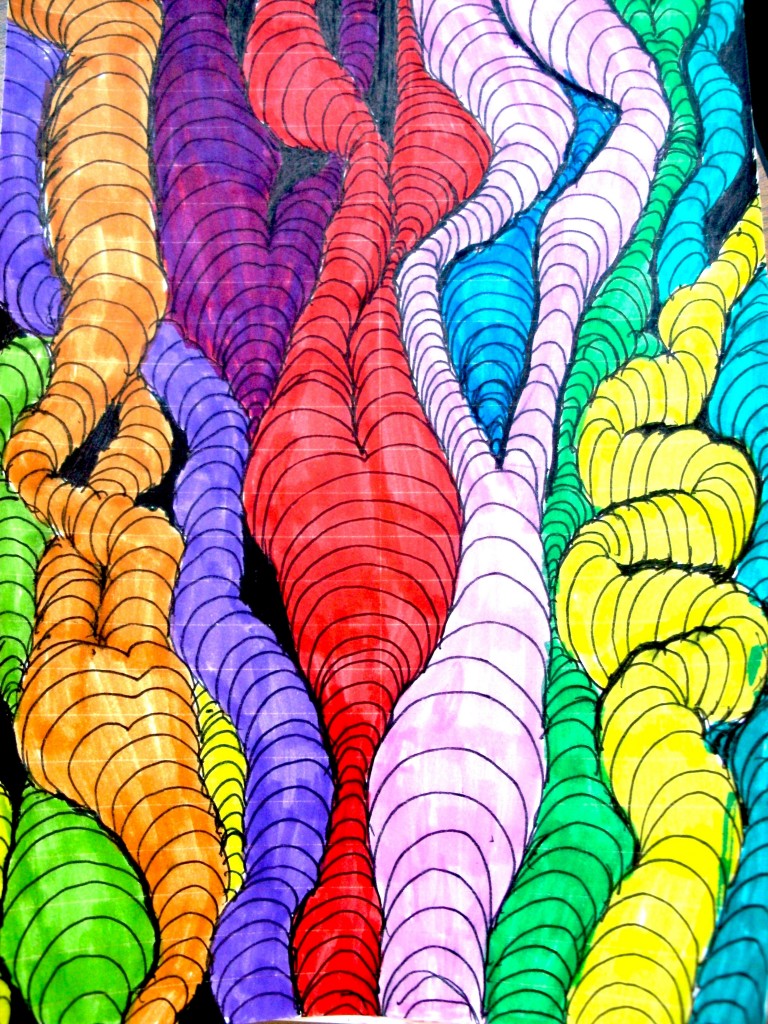
Chinese New Year Dragons
Fourth grade students created these fierce depictions of Chinese New Year Dragon faces out of construction paper, crayons and glue. Symbols of guardianship and good luck, these mythological creatures are comprised of the parts of several different animals:
Head of a camel, horns of a deer, ears of a cow/bull, eyes of a demon, scales of a fish/carp, a long beard, paws of a tiger, talons of an eagle, neck of a serpent, and the belly of a frog.
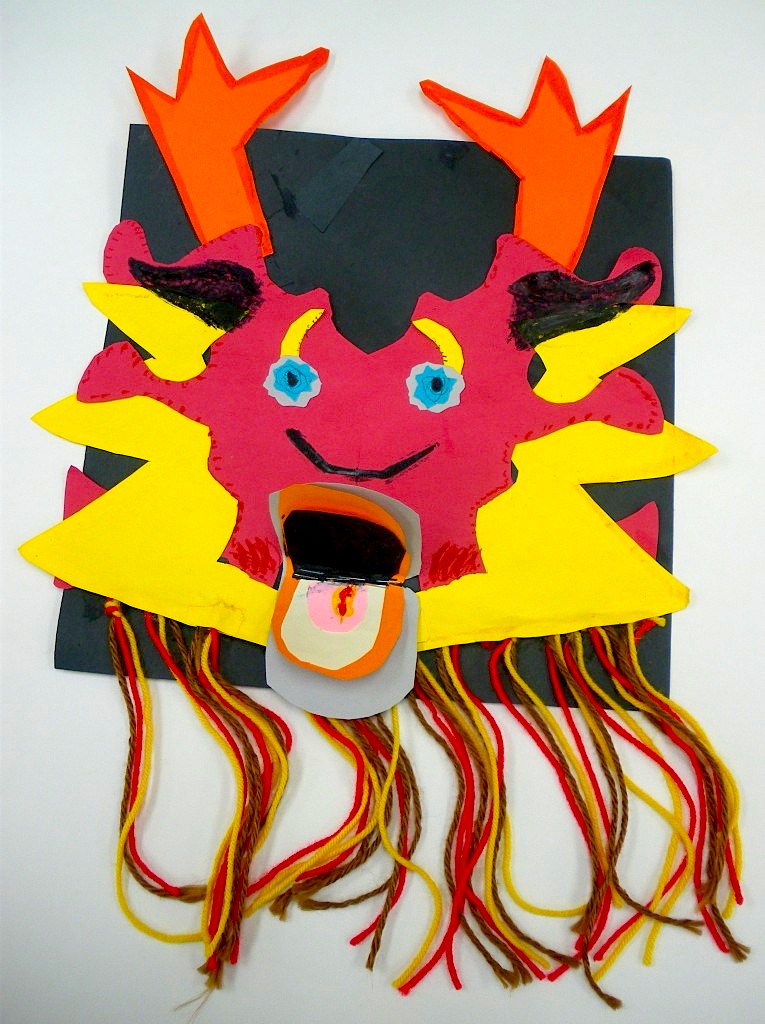
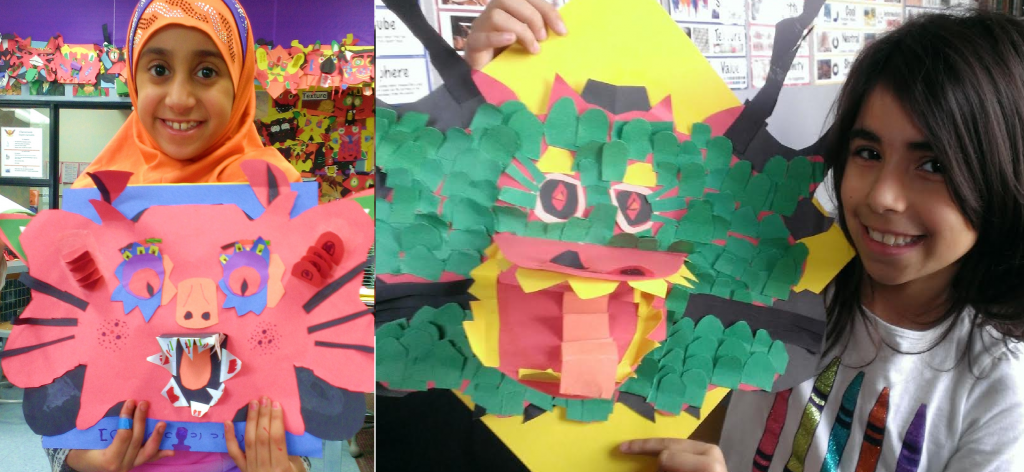
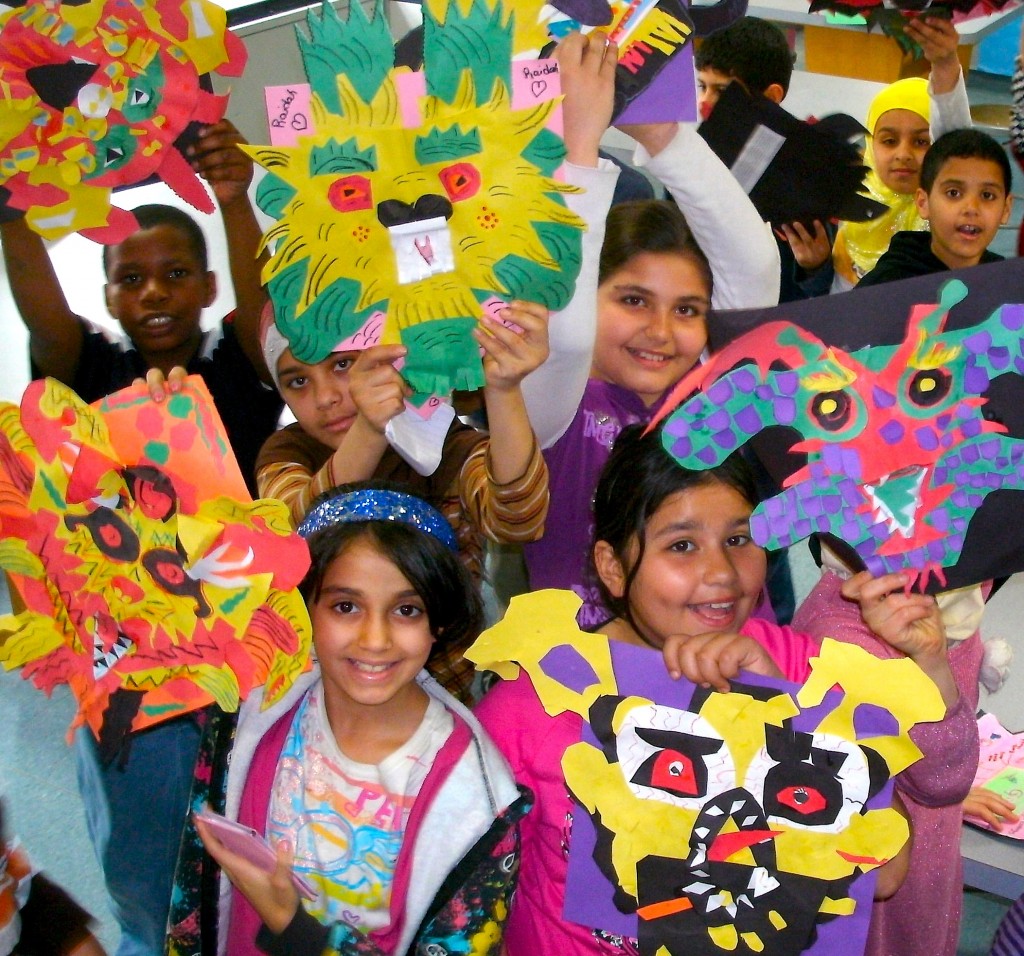
Monograms
Students drew their own monograms by creating fanciful designs around the first letter of their names.
Borders were added for flair.
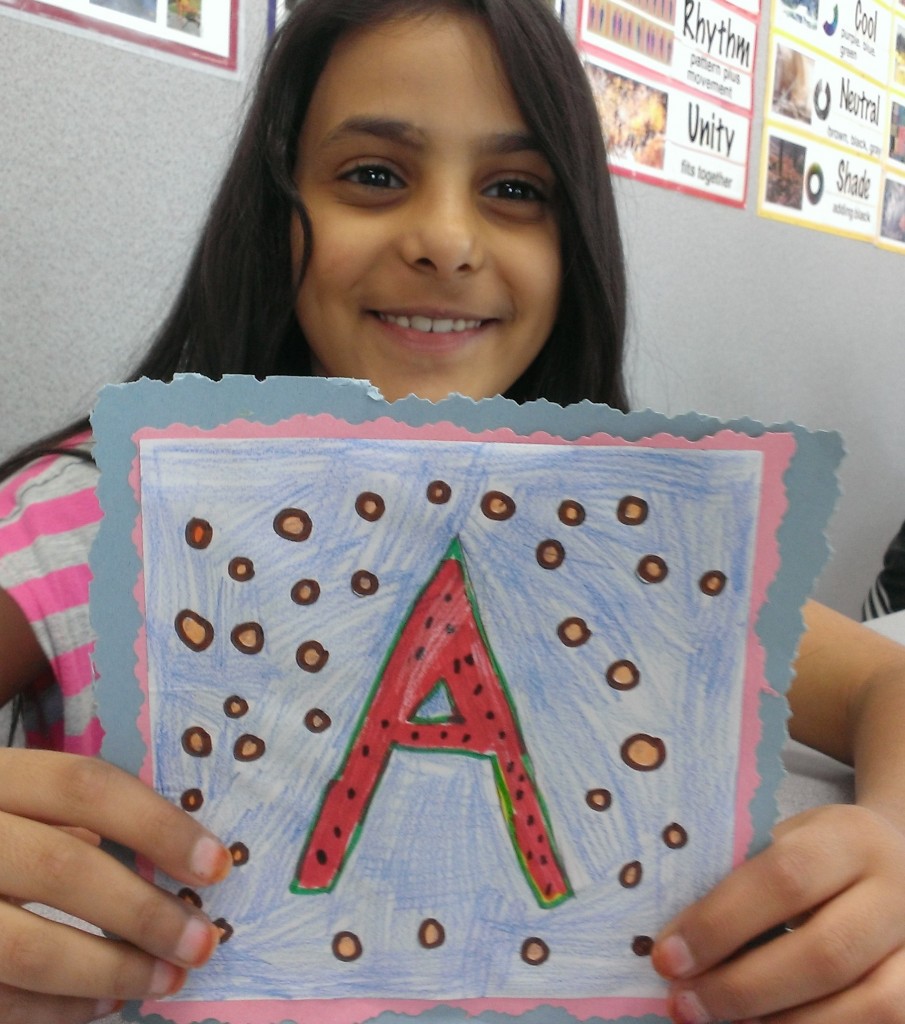
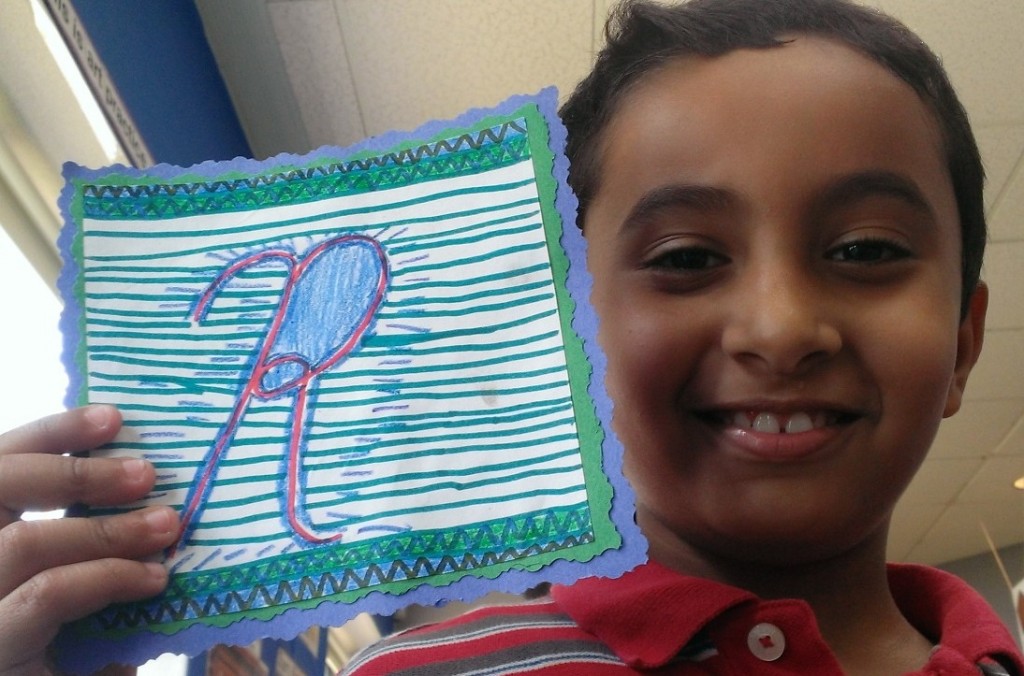
Colorful Painted Portraits
Fourth grade students drew and painted large, colorful portraits of themselves. Objects representing important aspects of their lives were painted in the background, along with bright patterns and swaths of their favorite colors.
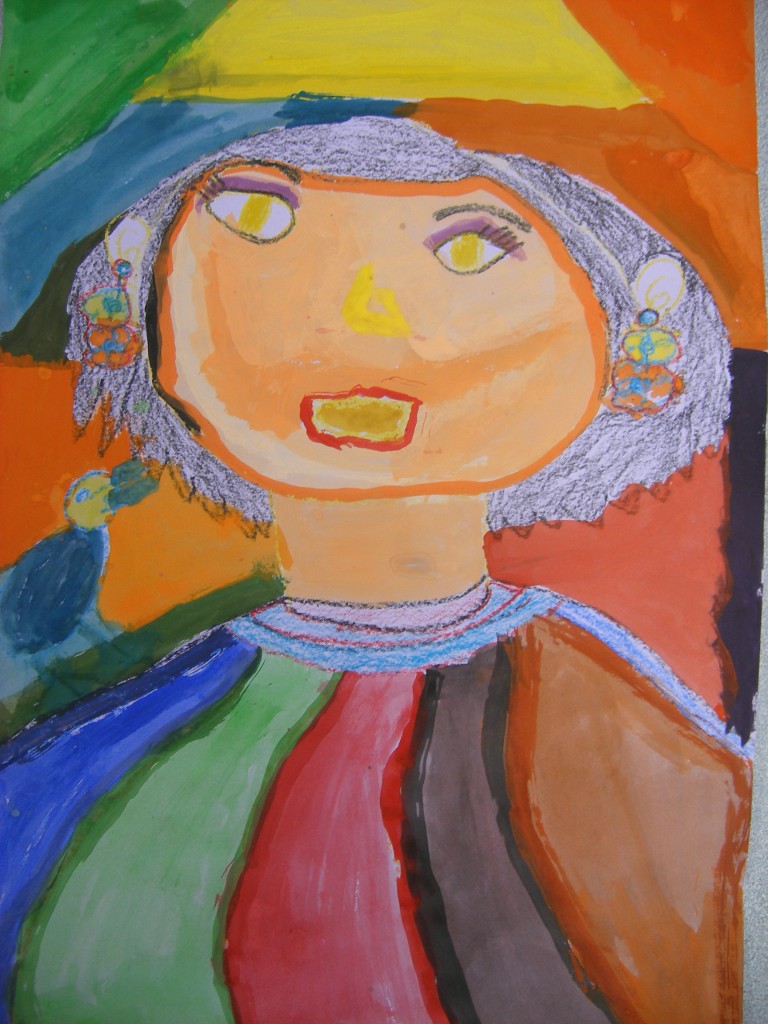
Living Skeletons for Day of the Dead
Day of the Dead is a festive Mexican holiday celebrating the lives of our ancestors. Contrary to most American cultures, skeletons are not perceived as “scary” on this holiday, instead being a happy reminder of loved ones who have passed on. In learning about this cultural tradition, students drew pictures of loved ones who have died as skeletons engaged in the activities they most enjoyed.
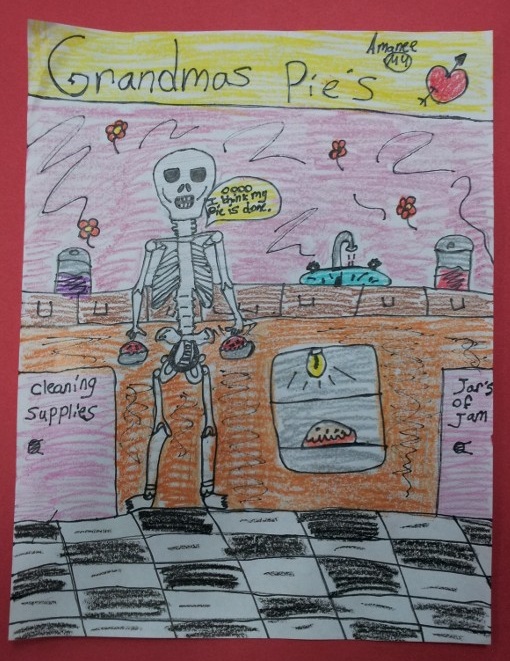
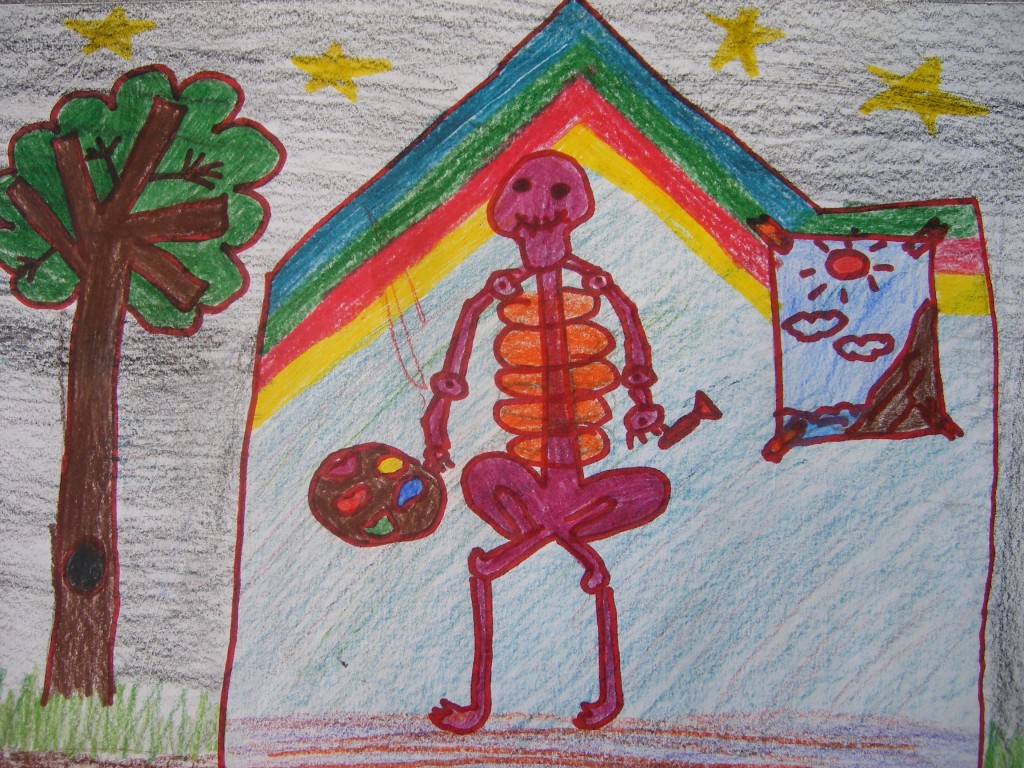
Think Green
Each fourth grader created a profile image thinking about how we can make the Earth a better place. Partners used a light to project each others’ silhouette onto a paper, traced the profile, then cut it out. The silhouette-shaped paper was then drawn on and colored, showing what each student was thinking.
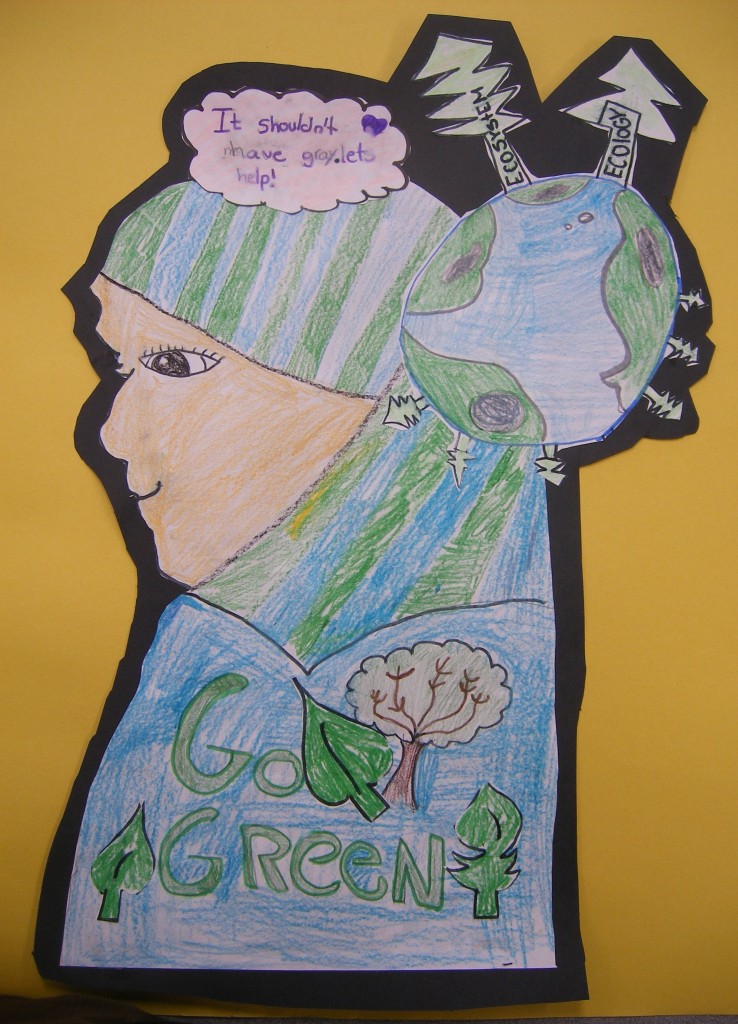
Hundertwasser Garden
Students studied the work of Friedensreich Hundertwasser, a contemporary Austrian artist. His use of vivid colors and bold designs inspired these flower paintings. Painted pieces of paper were cut into the shapes of flowers and used as background details, along with crayon designs to add unity.
